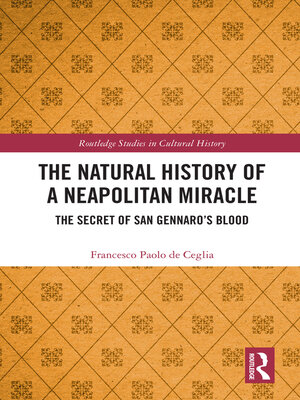The Natural History of a Neapolitan Miracle
ebook ∣ The Secret of San Gennaro's Blood · Routledge Studies in Cultural History
By Francesco de Ceglia

Sign up to save your library
With an OverDrive account, you can save your favorite libraries for at-a-glance information about availability. Find out more about OverDrive accounts.
Find this title in Libby, the library reading app by OverDrive.



Search for a digital library with this title
Title found at these libraries:
| Library Name | Distance |
|---|---|
| Loading... |
This book examines Naples's patron saint, Gennaro, the history of his blood relic, and the mystery of its periodical liquefaction.
Three times a year, Neapolitans gather to witness the recurring phenomenon of the liquefaction of San Gennaro's blood. From the seventeenth century to the present, crowds have prayed to the city's patron for protection from fires, earthquakes, plagues, droughts, and the fury of Mt. Vesuvius. In the "miraculous" moment of transposition from solid to liquid, the faithful seek respite from the ills of the world in the saintly blood, a visual reminder of the blood of Christ spilled for their salvation. In Naples, the periodical liquefaction of San Gennaro's blood is not officially recognized as miraculous by the Catholic Church, which now more cautiously refers to it as a prodigy. Nevertheless, for centuries, this phenomenon has been called "a miracle" in liturgical texts approved by the ecclesiastical authority and in the words of bishops, cardinals, popes, and saints. However, not everyone agreed. This volume follows the efforts of theologians, alchemists, charlatans, and scientists who, through the centuries, have tried to answer questions such as: Is the liquefaction of San Gennaro's blood really a miracle? If not, how is it possible to explain a phenomenon that occurs only on dates liturgically relevant to the saint?
The Natural History of a Neapolitan Miracle will be of great value to those interested in Religious Studies, Italian Studies, Medieval and Early Modern Studies, as well as the History of Science, Anthropology, and Ethnography.







